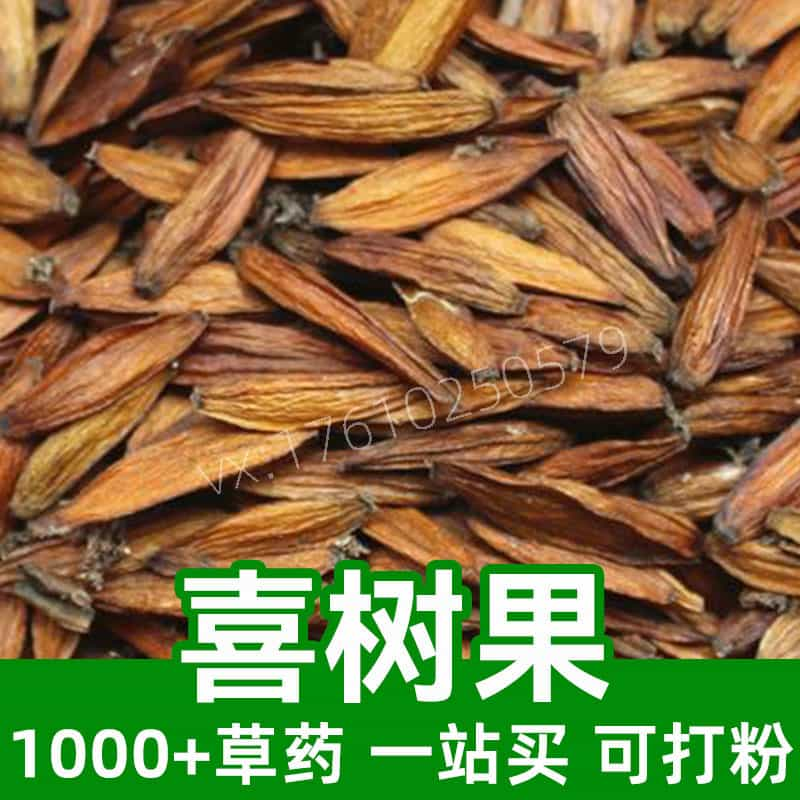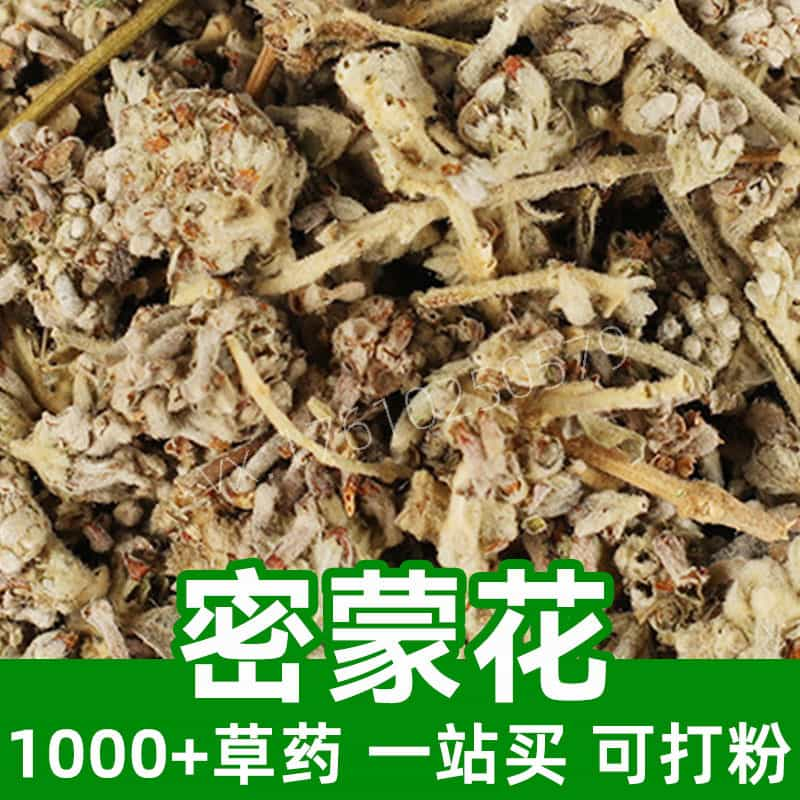Skunk Bugbane Rhizome Product Introduction
Skunk Bugbane Rhizome, also known as Nansheng, Tu Mahuang, is a perennial herbaceous plant with a large, thickened rhizome. The surface is yellowish-white with distinct flower scars and ring-like leaf scars. Its main active ingredients include senkamine, cyclical mahhuang alkaloids, as well as volatile oils, resins, and tannins. Skunk Bugbane Rhizome is primarily grown in various regions of China, with main producing areas in Hubei, Hunan, Sichuan, and Shaanxi.
In TCM, Skunk Bugbane Rhizome has a wide range of applications. It is slightly cold in nature, with a bitter and pungent taste, and works on the liver, spleen, and kidney meridians. Skunk Bugbane Rhizome is often used to expel wind, scatter cold, invigorate blood, relieve pain, detoxify, and reduce swelling. It is commonly used to treat conditions like rheumatic pain, headaches, numbness, and joint pain. Additionally, Skunk Bugbane Rhizome is used in the food industry as a flavoring or as a health food ingredient, offering a natural source with medicinal and edible properties.
Skunk Bugbane Rhizome Key Active Ingredients
Skunk Bugbane Rhizome (scientific name: *Anemarrhena asphodeloides Bge.*) is a perennial herb found mainly in North, East, and South China. Its key active components include senkamine, cyclical mahhuang alkaloids, and Skunk Bugbane Rhizome saponins.
- Senkamine: A unique compound in Skunk Bugbane Rhizome, known for its anti-inflammatory, antioxidant, blood sugar-lowering, and anti-tumor activities.
- Cyclical Mahhuang Alkaloids: A type of alkaloid with sedative, analgesic, anti-inflammatory, and blood sugar-lowering properties, often used in TCM preparations.
- Skunk Bugbane Rhizome Saponins: Important active compounds with antibacterial, anti-inflammatory, blood sugar-lowering, and antioxidant effects.
In addition, Skunk Bugbane Rhizome contains volatile oils, tannins, and resins, which also contribute to its medicinal and food industry uses.
The medicinal properties of Skunk Bugbane Rhizome are mainly reflected in its role in TCM, where senkamine and cyclical mahhuang alkaloids are considered the primary therapeutic compounds. Skunk Bugbane Rhizome is known for its ability to clear heat, dry dampness, expel wind, relieve cold, moisten the lungs, stop coughing, nourish yin, and reduce internal heat. It is often used to treat conditions like wind-cold flu, dry cough from lung heat, and diabetes.
Chemically, Skunk Bugbane Rhizome contains a variety of alkaloids, saponins, flavonoids, polysaccharides, and amino acids, which give it pharmacological effects and medicinal value, making it an important ingredient in TCM and the food industry.
Skunk Bugbane Rhizome Applications and Dosage
Skunk Bugbane Rhizome has broad applications in both TCM and the food industry. Below are key uses and recommended dosages in these fields:
- In Traditional Chinese Medicine:
- Clearing Heat and Detoxifying: Skunk Bugbane Rhizome is used to clear heat and detoxify, helping treat symptoms like thirst, dry mouth, and tongue in hot illnesses.
- Moistening the Lungs and Relieving Cough: It is used to moisten the lungs and relieve coughing, especially in cases of dry cough with little phlegm and a dry throat.
- Dispersing Cold and Expelling Wind: Skunk Bugbane Rhizome is beneficial for treating cold-related conditions like wind-cold flu and joint pain.
- Nourishing the Kidneys and Yin: It helps nourish yin and reduce internal heat, commonly used for symptoms like dry mouth, dry throat, and excessive thirst due to kidney deficiency.
- In the Food Industry:
- Flavoring Agent: With its distinctive aroma, Skunk Bugbane Rhizome can be used in flavoring meat, seafood, and other ingredients to enhance the taste.
- Dual-purpose Food: Skunk Bugbane Rhizome is considered a dual-purpose herb, used as a health food ingredient with heat-clearing, detoxifying, and nourishing properties.
- Tea: Skunk Bugbane Rhizome can be brewed into tea, which is beneficial for cooling the body and refreshing the mind, making it popular in summer beverages.
Dosage:
- TCM Decoctions: Skunk Bugbane Rhizome is often paired with other herbs in TCM formulas. Typically, the dosage ranges from 15-30 grams per decoction, prepared by boiling with water.
- Topical Applications: Skunk Bugbane Rhizome is also used in ointments for external application, such as for treating eczema and prickly heat.
- Food Additive: In food processing, Skunk Bugbane Rhizome powder or extract is added in moderate amounts, usually as part of a recipe formulation.
It is important to use medicinal Skunk Bugbane Rhizome under the guidance of a healthcare professional and follow the prescribed dosage. For food use, ensure it complies with food safety regulations.
Skunk Bugbane Rhizome Plant Overview, Distribution, and Growing Conditions
Skunk Bugbane Rhizome is a perennial herb with significant medicinal and edible value. The following provides details about the plant’s origin, distribution, and growing environment:
Plant Overview:
Skunk Bugbane Rhizome’s scientific name is *Cimicifuga foetida L.*, and it belongs to the Ranunculaceae family, Cimicifuga genus. This plant is also known as Di Ma and Di Langdu. The plant typically reaches 1-2 meters in height, with a thickened rhizome that branches. The leaves are compound, consisting of three to five leaflets. The flowers are small, white, and arranged in a racemose inflorescence, while the fruit is spherical.
Distribution:
Skunk Bugbane Rhizome is widely distributed in Northeast, North, Central, and Southwest China, particularly in provinces like Liaoning, Jilin, Heilongjiang, Hebei, Shaanxi, Sichuan, Yunnan, and Guizhou. It can also be found in Russia, Japan, and North Korea. In China, Skunk Bugbane Rhizome typically grows in mountainous areas, forest edges, stream sides, grasslands, and riverbanks.
Growing Environment:
Skunk Bugbane Rhizome thrives in moist environments and is adaptable to various soil types. It commonly grows in broadleaf forests, mixed forests, shrubs, meadows, ravines, and near streams. Skunk Bugbane Rhizome grows well at altitudes between 500 and 3500 meters and can tolerate both cold and drought conditions. However, it prefers a sunny, moist environment for optimal growth.
Skunk Bugbane Rhizome’s growing season spans from spring to summer, when temperatures are moderate, and rainfall is abundant, promoting healthy growth. The plant spreads via underground stems, forming clumps and producing flowers and fruits under suitable conditions.
Overall, Skunk Bugbane Rhizome is a hardy plant with strong adaptability, commonly found in mountain regions. It grows vigorously in moist, shaded environments and is a valuable resource in China’s medicinal herb industry.
Skunk Bugbane Rhizome Harvesting, Processing, and Storage
The proper harvesting, processing, and storage of Skunk Bugbane Rhizome are crucial for maintaining its medicinal value. The following outlines the steps for harvesting, processing, and storing Skunk Bugbane Rhizome:
- Harvesting Time: Skunk Bugbane Rhizome is typically harvested in late autumn to early winter, after the above-ground parts of the plant have withered, and the rhizomes and roots contain the highest concentration of active ingredients.
- Harvesting Method: The entire plant should be carefully dug up to protect the rhizomes and roots from damage. After removing dirt and cleaning the plant, it should be cut into sections for further processing.
- Initial Processing: The harvested Skunk Bugbane Rhizome undergoes initial processing, which includes removing dirt and impurities, washing, and cutting the plant into segments or slices for drying and storage.
- Drying: The processed Skunk Bugbane Rhizome should be dried in a well-ventilated, cool, and shaded area. Direct sunlight should be avoided to prevent damage to the quality of the herb. Drying should be completed when the surface is dry, but the inner parts retain some moisture.
- Storage: After drying, Skunk Bugbane Rhizome should be stored in a dry, ventilated, and shaded location. It can be placed in breathable bags or containers to seal it from moisture, mold, and insects.
- Shelf Life: Properly stored Skunk Bugbane Rhizome can last for up to 1-2 years without losing potency. Regular inspection for signs of mold or pest infestation is essential.
Monica Sun is a seasoned expert in the natural raw materials industry, with over a decade of experience specializing in traditional Chinese medicinal herbs, spices, and fungi. She is skilled in the sourcing, processing, and application of these materials, emphasizing sustainability and innovation. Monica Sun has contributed to the development of high-quality natural raw materials that serve as essential components in functional foods, pharmaceuticals, and cosmetics, delivering tailored solutions to meet diverse market needs.













